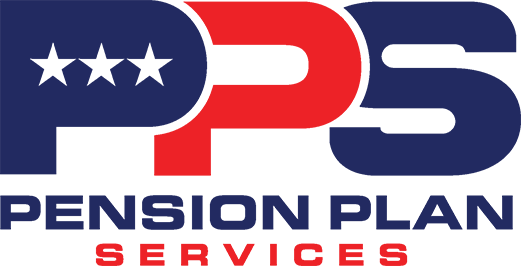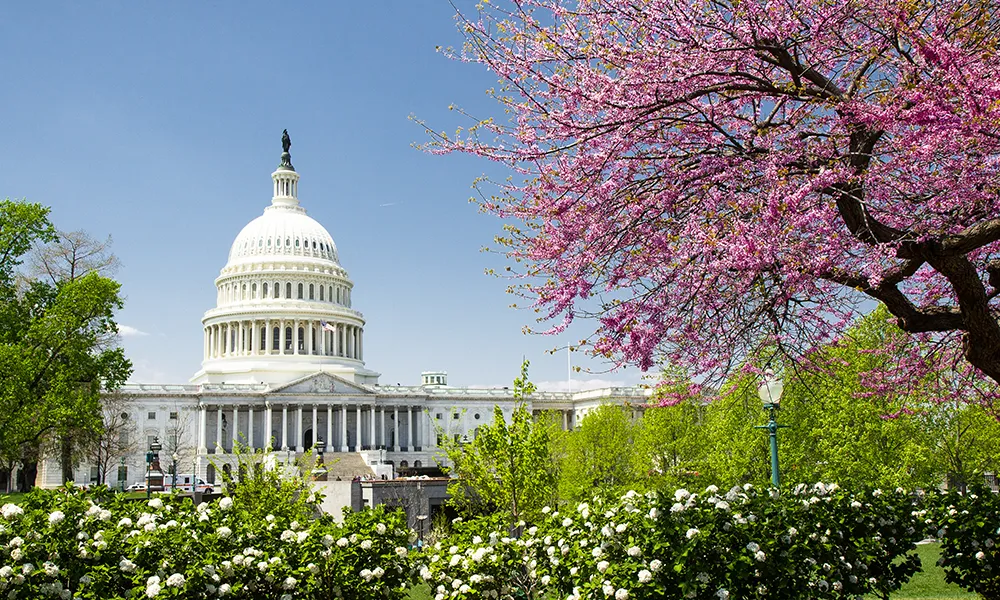Hot Topic:
DOL ESG Final Rule Sparks Action
On November 22, 2022, the DOL released its long-anticipated final rule regarding regulations governing plan investment selections, especially regarding consideration of investments focused on environmental, social, and governance issued (ESG). The final rule has sparked reactions in a number of spheres — including two Congressional responses and at least two legal challenges.
The Final Rule
The final rule does not change the basic ERISA principles in this area, but it includes some important changes. The final rule stresses that plan fiduciaries must focus on financial objectives in evaluating plan investment options by running risk-return analyses. Such analyses may include consideration of ESG factors, but only to the extent the plan fiduciary determines they are relevant to the risk-return analysis. The final rule is intended to offer a more neutral path between an earlier proposed rule under the current administration (which provided in part that ESG factors would often be relevant to risk-return analyses) and with the prior rules under the Trump administration (which placed more constraints on consideration of ESG factors).
Congressional Response
The Congressional response has been largely split along party lines, with Republicans generally voting to nullify the rule and Democrats generally voting to codify the rule.
On February 7th, Republican members of both the House and the Senate introduced measures to nullify the DOL’s final rule under the Congressional Review Act. The measure passed the House and the Senate in late February and early March. The real challenge, though, comes next — challenges under the Congressional Review Act must be signed by the President. President Biden has declared that he will veto this measure, and it is unlikely that either the House or the Senate will be able to override that veto.
On February 23rd, House Democrats introduced legislation to amend ERISA to codify certain provisions of the final rule. This act — the “Freedom to Invest in a Sustainable Future Act”— would make it clear that ESG factors may be included in consideration of investment outcomes and that ESG factors could be used as tiebreakers when comparing two investments with otherwise equal risk-return profiles. Though there is some chance of this passing the Senate, there is almost no chance of this passing the House.
Suits Filed
The final rule has been met with at least two legal challenges, both alleging that the final rule violates the Administrative Procedure Act and should be blocked by the court. The first, State of Utah et. al. v. Walsh et. al., was brought jointly by a coalition of twenty-five Republican state attorneys and three private plaintiffs against the DOL. The second, Braun et. al. v. Walsh et. al., was brought by two private individuals who are participants in ERISA retirement plans.
Despite these many challenges, the final rule remains in effect and should be followed carefully by plan fiduciaries. For a more detailed look at the final rule, see our companion piece this quarter (“Best Practices for Plan Sponsors: Following the ESG Final Rule”).

by Kelsey Mayo
Partner, Poyner Spruill
Kelsey’s practice is focused in the areas of Employee Benefits and Executive Compensation. She works with business owners and HR executives to understand and manage employee benefits and executive compensation arrangements. She routinely represents clients before the Internal Revenue Service, Department of Labor, and Pension Benefit Guarantee Corporation and has extensive experience in virtually all aspects of employee benefit plans and executive compensation arrangements.
Best Practices for Plan Sponsors: Following the ESG Final Rule
As noted in our companion article this quarter (“Hot Topic: DOL ESG Final Rule Sparks Action”), there have been a number of actions challenging the DOL’s final rule regarding the place of ESG factors in investment selection and oversight. Despite these challenges, the final rule remains in full effect and plan sponsors should take care to properly implement its provisions.
Overall, the final rule continues to stress that plan fiduciaries must focus on financial objectives and not subordinate the interests of participants and beneficiaries to unrelated objectives. It attempts to remain neutral on the factors that go into this risk-return analysis and removes any prior suggestions that certain factors should or should not be considered. Key takeaways include the following:
“Appropriate Consideration” of Investments
- It describes the factors fiduciaries must consider as those “relevant to a risk and return analysis.”
- It no longer suggests analysis of ESG factors would “often” be material to the determination. Instead, fiduciaries have broad discretion to determine what factors are relevant based on all facts and circumstances.
- Regarding ESG specifically, it provides only that a risk-return analysis may include the economic effects of climate change and other ESG factors on a particular investment or investment course of action to the extent the fiduciary determines they are relevant to the risk-return analysis.
- It clarifies that fiduciaries do not violate the ERISA duty of loyalty solely because they take participants’ preferences into account when constructing an investment menu as long as all options are prudent — this is not a license to offer a menu of imprudent investment options because participants would prefer them nor is it a mandate to incorporate participants’ preferences.
- (Remember the rule from the recent Supreme Court case Hughes v. Northwestern: all investment options must be prudently selected and prudently monitored. The inclusion of prudent investment options does not excuse the inclusion of imprudent ones.)
QDIA Standards
The final rule applies the same standards to qualified default investment alternatives (QDIAs) as to other plan investments. It eliminates the special standards and disclosures the prior rule and the proposal had for QDIAs in circumstances where non-economic factors were considered.
“Tiebreaker” Rules
The DOL largely retained the “tiebreaker” provisions from the proposed rule. Accordingly, if a fiduciary prudently concludes that competing investments equally serve the financial interests of the plan over the appropriate time horizon, then the fiduciary can select among those options based on factors other than investment returns.
Final Thoughts
While the new final rule makes important changes, ERISA’s basic requirement that plan investment decisions be made prudently and solely in the financial interests of participants has not changed. Plan sponsors should continue to follow a robust, well-documented, and prudent process to ensure that any plan investment (ESG or otherwise) serves that goal.
What’s New In Washington:
SECURE 2.0 Permits Student Loan Matching
SECURE 2.0 has brought many changes to the retirement space. Among them: student loan matching. This permissible and optional change is of great interest to many employers and plan sponsors, especially those seeking to attract and retain younger workers.
What’s the new rule in a nutshell? SECURE 2.0 makes it significantly easier for employers to adopt student loan matching programs by treating “qualified student loan payments” as elective deferrals for purposes of employer matching contributions. This means the employer’s contribution that matches “qualified student loan payments” is actually counted as a match (instead of a nonelective contribution) and can be incorporated into a safe harbor match plan. Employers may begin implementing this option for plan years beginning after December 31, 2023.
What are “qualified student loan payments”? SECURE 2.0 defines “qualified student loan payments” (QSLPs) as those: (1) made by an employee, (2) that repay a qualified education loan, (3) incurred by the employee, (4) used to pay for qualified higher education expenses. Only repayments up to the Section 402(g) limit on deferrals (or the employee’s compensation, if less) minus elective deferrals actually made may be taken into account. To break this down a bit further:
- The payment must be made by the employee. This means that QSLPs do not include loans that have been forgiven, paid by a nonprofit or through a grant, paid by a family member, or paid by the employer as an employee benefit.
- The payment must be made to repay a qualified education loan. This generally means a loan incurred by the employee solely to pay for qualified higher education expenses. Higher education expenses here must have been paid or incurred within a reasonable time before or after the loan was taken, and must have been used to pay for education furnished while the recipient was an “eligible student” (defined for this purpose as one enrolled in higher education carrying at least a half-time workload of study). This generally includes both expenses for an employee and expenses for an individual who was the employee’s spouse or dependent at the time the loan was incurred.
- The loan must have been incurred by the employee. This means that it must be the employee that is liable for repayment. This can include instances in which the employee is liable for the education of a spouse or dependent (such as through a Parent PLUS loan or a loan in which the employee is a joint borrower). If the loan is not enforceable against the employee, it is not incurred by the employee.
- Finally, the loan must have been used to pay qualified higher education expenses. This includes a wide range of expenses related to higher education, including things like normal tuition and fees, books, supplies, room and board, study abroad expenses and, for students with dependents, an allowance for daycare. This is generally limited to expenses for education at accredited public, nonprofit, proprietary, and postsecondary institutions.
How do employers verify this? Employers may rely on an employee’s certification that he or she has made a QSLP. Employers must require such certifications at least annually. Practically speaking, employers may choose to require certification more frequently, and may also choose to require documentation reflecting the repayment in order to better administer the matching contribution.
What are some other plan requirements that must be in place? Matching contributions made for deferrals and QSLPs should be made at the same rate. Employees can receive QSLP matching contributions only if they are otherwise eligible to receive matching contributions on deferrals—and all employees eligible to receive a matching contribution on deferrals should be eligible to receive a matching contribution on QSLPs. Matching contributions on QSLPs must vest in the same manner as matching contributions made on deferrals.
How does this impact testing? Most importantly, the match on QSLPs can be incorporated into a safe harbor design —meaning that no additional testing would occur. For plans that are not safe harbor plans, the employer contribution on QSLPs is counted as a match for purposes of the ACP test and the plan may perform ADP testing separately for those employees who received matching on QSLPs.
The Treasury will be issuing guidance on QSLP implemen-tation in the future. In the meantime, now is a great time for plan sponsors to consider whether they want to add a QSLP provision. Plan sponsors considering inclusion of QSLPs should work with their TPA partner to discuss administration and begin to consider how to work through those administrative hurdles—including how to determine the amount of a QSLP match on an ongoing basis.

